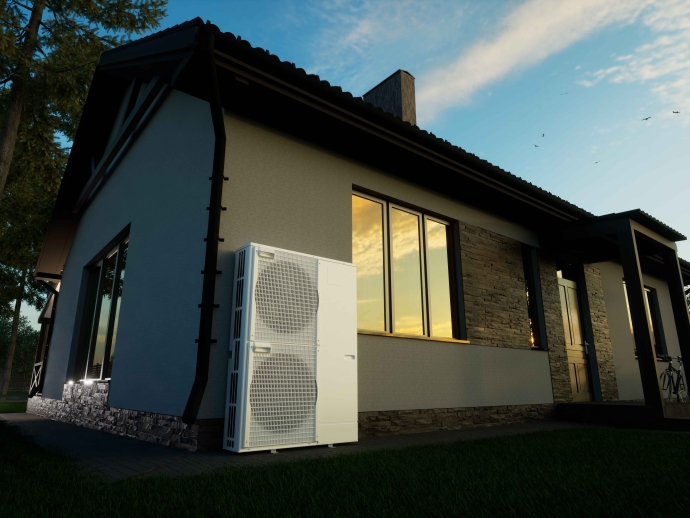VRF Heat Recovery Systems: How They Work and Why They Matter

In the realm of modern HVAC technology, Variable Refrigerant Flow (VRF) systems have emerged as a leading solution for efficient and customizable climate control. Among the various types of VRF systems, heat recovery systems stand out due to their ability to simultaneously provide heating and cooling, leading to significant energy savings and enhanced comfort. This article delves into the workings of VRF heat recovery systems and explores their importance in today's building landscape.
Understanding VRF Technology
Before diving into heat recovery, it's crucial to understand the fundamentals of VRF technology. VRF systems are a type of direct expansion (DX) system that uses refrigerant as the heat transfer medium, delivering heating and cooling directly to the conditioned space.
Unlike traditional systems that circulate air or chilled water, VRF systems vary the flow of refrigerant to multiple indoor units, allowing for individual temperature control in different zones. This offers greater flexibility and energy efficiency compared to conventional HVAC systems.
VRF systems act as multi-split systems, connecting multiple indoor units with one centralized outdoor condensing unit assembly, providing simultaneous heating and cooling and heat recovery in various zones.
The Magic of Heat Recovery
VRF systems come in two main types: heat pump and heat recovery. While heat pump systems can only operate in one mode at a time (either heating or cooling), heat recovery systems can simultaneously provide both heating and cooling to different zones. This capability is particularly advantageous in buildings with diverse heating and cooling needs, such as office buildings, hotels, and hospitals.
The core concept behind heat recovery is the ability to transfer exhaust heat (or waste heat) from a zone being cooled to a zone that requires heating. Instead of rejecting the excess heat to the outdoors, as traditional systems do, heat recovery VRF systems repurpose this energy to heat other areas of the building.
How VRF Heat Recovery Works
VRF heat-recovery systems achieve simultaneous heating and cooling through a sophisticated network of components and controls. Here's a breakdown of the key elements:
-
Branch Circuit (Bc) Controller: The heart of a heat recovery VRF system is the Branch Circuit controller. This controller acts like a "flight controller," directing the flow of refrigerant gas or liquid to different zones based on their individual heating or cooling needs.
-
Refrigerant Piping: Heat recovery VRF systems typically utilize a three-pipe system (liquid line, a hot gas line, and a suction line) and special valving arrangements, although some manufacturers have proprietary designs using a two-pipe system. Each indoor unit is connected to these pipes using solenoid valves.
-
Indoor Units: Each indoor unit can operate independently in either heating or cooling mode. An indoor unit requiring cooling will open its liquid line and suction line valves and act as an evaporator. An indoor unit requiring heating will open its hot gas and liquid line valves and act as a condenser.
-
Heat Exchangers: Extra heat exchangers in distribution boxes are often used to transfer some reject heat from the superheated refrigerant exiting the zone being cooled to the refrigerant that is going to the zone to be heated.
-
Variable Speed Compressors: VRF systems utilize variable-speed compressors to precisely match the system's capacity to the real-time conditioning needs of the zones. Outdoor fans with variable frequency drives motors and indoor units with electronically commutated motors (ECM) further enhance control.
Benefits of VRF Heat Recovery Systems
The ability to simultaneously heat and cool different zones offers a multitude of benefits:
-
Energy Efficiency: By repurposing waste heat, heat recovery VRF systems can significantly reduce energy consumption. Some studies suggest that these systems can lower energy usage by up to 30% or even more.
-
Cost Savings: Lower energy consumption translates directly into reduced utility bills. The initial investment in a VRF heat recovery system can be offset by long-term savings.
-
Enhanced Comfort: Simultaneous heating and cooling allows for customized comfort in different zones, catering to individual preferences and occupancy patterns.
-
Sustainability: By reducing energy consumption and reliance on fossil fuels, heat recovery VRF systems contribute to a smaller carbon footprint and improved sustainability.
-
Zone Diversity: Heat recovery systems excel in buildings with zone diversity, where some areas require heating while others need cooling. This is common in office buildings with varying solar exposure, hotels with different occupancy patterns, and hospitals with diverse environmental needs.
Ideal Applications
VRF-HR systems work best when there is a need for some of the spaces to be cooled and some of them to be heated during the same period. This often occurs in the winter in medium-sized to large sized buildings with a substantial core or in the areas on the north and south sides of a building.
Conclusion
VRF heat recovery systems represent a significant advancement in HVAC technology, offering unparalleled flexibility, energy efficiency, and comfort control. By understanding how these systems work and recognizing their benefits, building owners and designers can make informed decisions that lead to sustainable and cost-effective climate control solutions. As the demand for energy-efficient and customizable HVAC systems continues to grow, VRF heat recovery is poised to play an increasingly important role in shaping the future of building design.

